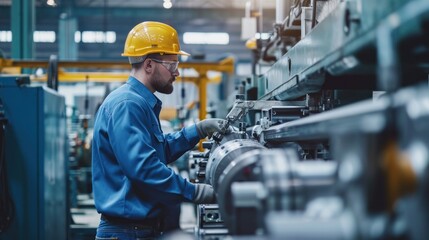In the high-stakes environment of construction, safety wear is the unsung hero shielding workers from the potentially lethal elements of their jobs. But even the sturdiest of safety gear might prove frail in a scenario where it's not up to standard, besetting catastrophic consequences. This is where PPE regulations and procedures step in, laying the groundwork for a trusted protection fortress. In an industry that makes no room for error, adhering to these tenets is not just critical—it's essential.

PPE Regulations South Africa
South Africa's regulations on Personal Protective Equipment (PPE) fall under the Occupational Health and Safety Act of 1993. This legislation is enforced by the Department of Employment and Labour, which sets out specific guidelines for employers, employees, and manufacturers regarding the use, maintenance, and supply of PPE in the workplace.
Personal Protective Equipment (PPE)
Personal Protective Equipment, or PPE, is the first line of defense against hazards present in construction. This includes protection for the head, eyes, face, hands, and feet—all of which are vulnerable areas on a worksite. From hard hats to safety glasses to steel-toed boots, each piece serves a specific purpose to safeguard workers from potential injuries or illnesses.
Ensuring Sufficient Protection through Compliance
The proper use of stringent Personal Protective Equipment (PPE) regulations and the requirement for certificates are crucial measures in ensuring that all protective equipment offers adequate protection and safety to the users. By rigorously evaluating gear against established safety standards, companies ensure that their workers are equipped with not just any protection, but to provide sufficient protection tailored to the specific hazards they face. This level of compliance not only safeguards the physical well-being of employees but also fosters a culture of safety and respect within the workplace, reinforcing the idea that everyone's safety is a top priority.
The Security of Standards
Understanding Personal Protective Equipment (PPE) regulations is not merely a matter of compliance; it's an odyssey into the core of safety engineering. Administrative controls serve as an arsenal of guidelines, fortified with research and experience, equipping us to distinguish between effective shields and mere placeholders. These standards extend beyond the raw materials and construction of protective gear. They encapsulate proper design, functionality, ergonomics, and the environmental conditions in which PPE should perform optimally.
Unbeknownst to many, this labyrinth of rules is not a monolithic code but a fluid stream of standards that undulates the specifics of the trade. While general guidelines undoubtedly exist, the Personal Protective Equipment (PPE) that holds up the skyscrapers won't be the same that braces for the gusts deep within a mine. Flexibility in complying with these stringent standards is paramount, but the rigidity in quality should remain ironclad.
In the blog post, we'll elucidate the multifaceted impact of these regulations, striking a chord with construction workers, safety equipment retailers, and OSHA compliance officers.
Navigating the Certifications Maze
The realm of other PPE standards is coextensive with a labyrinth of certifications, each with its nuanced requirements and significance. For the uninitiated, deciphering these acronyms can be as challenging as learning a new language. CSA, ANSI, EN, and NFPA—to name a few—are not merely a jumble of letters; they are beacons that guide us to Personal Protective Equipment (PPE) that's been benchmarked against the best in the world.
To comprehend the magnitude of these certifications, it's vital to understand the exhaustive process each piece of equipment must undergo. In essence, these certifications are a seal of approval, an imprimatur that announces to the world that the Personal Protective Equipment (PPE) in question doesn't just meet the standard—it exceeds it. We will unravel these certifications, demystifying the yardstick they use to measure the integrity of Personal Protective Equipment (PPE), and why these stamps are non-negotiable for both the conscientious worker and discerning retailer.
Lifting the Burden for Construction Workforce
Commonly referred PPE regulations are not just bureaucratic red tape; for the labor force, they are the promise of returning home in one piece. The benefits that accrue from adhering to these regulations are manifold and resonate profoundly with the workers in the trenches. From the physical and mental assurance of safety like skin protection to the empowerment of a healthier and more productive work environment, these regulations are the silent efficiency managers of the construction sector.
But what does it mean for the construction worker to don Personal Protective Equipment (PPE) that's certified? We'll paint a picture of a day's work shielded by gear that's been rigorously tested and approved, and explains why productivity is not just about speed—it's also about safety.
Among the most critical pieces of equipment worn by the construction workforce are goggles and masks, which offer essential protection against a multitude of hazards. These are not mere accessories but vital safety gear that shield the eyes and respiratory system from injuries or illnesses that can result from exposure to harmful substances. Goggles, designed to fit securely around the eyes, protect against flying debris, chemical splashes, and intense light. Masks, on the other hand, range from simple dust filters to sophisticated respiratory devices akin to medical devices, designed to protect against inhalation of hazardous chemical particles, vapors, or biological agents.
To maximize the effectiveness of these protective tools, proper training on their use, maintenance, and the scenarios in which they're required is indispensable. Workers must understand not only how to wear goggles and masks correctly but also how to maintain them to ensure they remain in good condition and provide the expected level of protection. This includes regular cleaning, inspecting for damage, and understanding when replacements are needed. In environments where chemical hazards are present, this knowledge becomes even more critical, as compromised equipment can lead to severe exposure risks. Therefore, ensuring that goggles and masks are adequately maintained, and workers are proficient in their use, forms a foundational aspect of safeguarding health and safety on construction sites.
Retailers: The Guardians of Quality
For those on the front line, it's retailers who serve as the bastions, the last line of defense before the PPE is in the hands of the worker. The onus lies with these retailers to stock and distribute Personal Protective Equipment (PPE) that's not just a uniform but a guarantee. In an industry as competitive and high-stakes as construction, the credibility of a retailer hinges on the quality of its offerings.
But what do these quality Personal Protective Equipment (PPE) offerings mean for the retailers themselves? Certification is not just about stocking the shelves with colorful labels; it's about building trust, loyalty, and a reputation that's impervious to the shifts of the market. We'll explore how committing to certified PPE could transform the retailer's position in the industry, offering a beacon for safety to both the worker and the industry regulations.

The Peace of an OSHA Mind
The vanguard of safety in the construction sector, OSHA compliance officers, are the gatekeepers, ensuring that the fabric of the industry uses the right threads. Inspections and audits are not just 'surprise visits' of inconvenience but a surgical strike to the maintenance of safety protocols. Certifications simplify the job for these officers, serving as a quick reference for the compliance of the establishment.
But why should OSHA officers champion certified PPE? The answer lies in prevention versus cure. Ensuring that the PPE used in construction matches the quality benchmarks preemptively saves lives, time, and resources. We'll shed light on how adhering to these certifications can not only simplify the job but also elevate the standards of safety that OSHA endeavors to instill.
Conclusion
Safety in the workplace is a collective responsibility. For the construction industry, PPE is not just a requirement; it's the very shield that enables workers to pursue their craft in the work practice. Complying with regulations and understanding the import of certifications is not about paperwork—it's about instilling a culture that puts value on life and well-being.
In this extensive exploration of the topic, we dissected the far-reaching effects of PPE regulations and certifications. We've traversed the unique vantage points of construction workers, safety equipment retailers, and OSHA officers, presenting a comprehensive view of the tapestry that PPE standards weave in the safety narrative.
It's time to champion the gauntlet of quality in safety wear. After all, in an industry where the stakes are as high as the buildings they construct, safety is not a luxury—it's a regulation.
